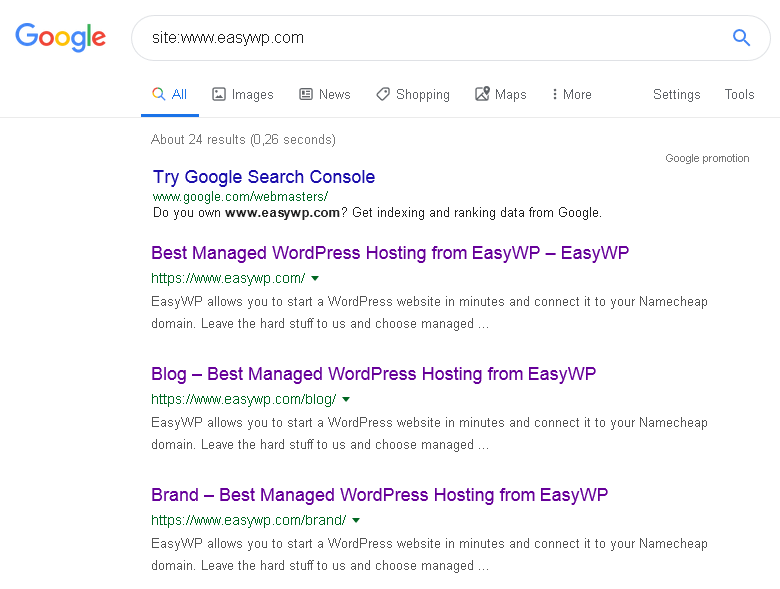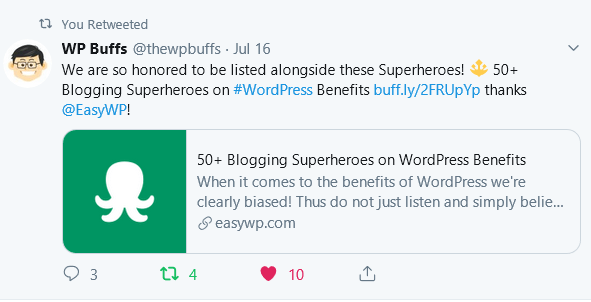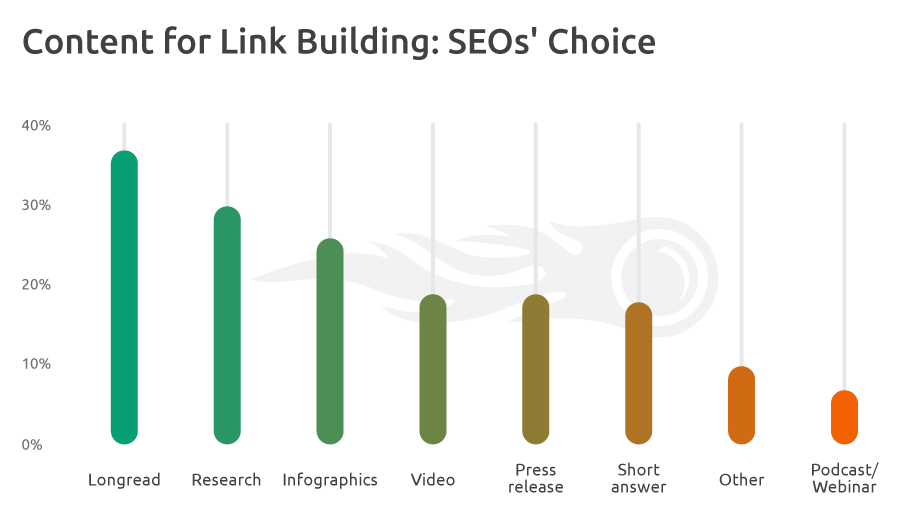Common SEO Mistakes New WordPress Websites Make


When starting out with a new WordPress website, you’ve made a great choice. WordPress is Google-friendly, right out of the box, as many experts assure us.
Yet you can optimize WordPress SEO even further right from the start. When you solely rely on the standard optimization you are prone to make some mistakes. Common SEO mistakes can affect:
- Indexing on Google
- Titles on posts
- Social sharing
- Links to content
- Engagement and outreach
These are, among others, enough to stall your growth or at least slow it down significantly. So why not prevent these mistakes from happening?
What is SEO? Isn’t it Dead, Anyway? Why Care at All?
One of the most widespread myths about SEO (Search Engine Optimization) is that it’s “dead” or in other words, you don’t need it (anymore). Improving websites for search engine users has lost some impact over the years. This is true as Google prefers to keep searchers on Google properties itself. Still, you can’t live with it as a serious online publisher.
Unless your website is purely a hobby project and you’re happy with getting things out there, regardless of whether or not someone notices, trying to get people to find your content is still the most important way to get website visitors.
You need to enable Google to find your site and to assess its worth properly.
Otherwise your competition will receive the remaining clicks from search engine results. While Google has been the dominant search engine for a decade, you need to also optimize for other search tools, especially on popular websites where people search a lot. These include:
In fact, SEO is alive and kicking. The more difficult it becomes to get a share of the remaining organic reach, the more proper SEO can give you a competitive advantage. In order for it to work, though, you need to make modern SEO part of the whole process—not just an afterthought.
Ideally, you start creating content by conducting a keyword research and improving upon existing successful content that already ranks.
While you’re at it, you might want to consider the people you’d like to involve in that piece so that you also get organic visibility from their shares and links. Otherwise you’ll have to rely on ads unless you have an audience already.
How to Speed up Google Indexing Instead of Passively Waiting
One of the most common mistakes new websites (or rather their owners) make when it comes to Google optimization is assuming that the search giant will find you on its own.
For many years the opposite was the case; most people new to the Internet still looked for a way “to submit to search engines.” Demand creates supply so shady services often offered automated ways to “submit to 1,000 search engines” even though Google already dominated the search market.
Now it’s the other way around. We assume that Google will somehow know about us and we don’t need to do anything anymore. This is only partially true. Google may eventually find you but it may take a while.
Passively waiting for the Google spider is not a good SEO strategy.
You can still speed up and improve the indexing process by not only linking to your new website, blog or content from an existing and already well-indexed website but also by adding a so-called “(XML) sitemap.”
- Many “all-in-one” SEO WordPress plugins like Yoast SEO, which is the most popular one, offer sitemap integration or features.
- There are also plugins that only focus on sitemap creation such as “nomen est omen,” the Google XML Sitemaps plugin.
- Use the Pubsubhubbub protocol to ping Google. Google uses it not only for alerts and so-called “feed readers” but also to get notified.
No matter which type of plugin you choose, it’s always better than simply waiting for your content to get automatically indexed by Google. It may significantly slow down the search engine crawling and also hamper evaluation of your website content.
You may have to wait weeks, especially as new websites often lack the necessary authority to initially catch Google’s eye. Once indexed, the lack of links may also negatively affect your website’s authority. Ideally, you should both link your content via the sitemap and make other websites link to yours as soon as possible.
Last but not least you can manually add new pages of your website to the Google index by using their Search Console. This may especially help small websites that publish occasional content. For a large number of pages, however, a sitemap is indispensable. Do you have thousands of new pages? Even incoming links and pinging Google by Pusubhubbub may not suffice, then.
How to Optimize Your HTML Title Tags So They’re Unique

Nowadays, when people speak of titles they’re usually referring to headlines. In HTML, the actual title is invisible on the website but visible in the browser tab, bookmarks, and most importantly, in the search engine results.
Surprisingly, the HTML title tag is still one of the most important Google ranking factors. There are at least 200 or more but when you have just one way to influence Google’s opinion on what your page is about, then make sure to your title tags are optimized! I don’t say just “title tag” but tags on purpose, as you have to be aware of the impact that the WordPress title option has on your website.
An optimized title tag for your homepage is not a one-size-fits-all solution, though. By default on WordPress, your homepage title will appear on all posts, pages, categories, and other pages (think pagination, archives, etc.) so you may end up with the same long optimized title on hundreds or thousands of pages.
Since EasyWP’s homepage runs on WordPress and the blog does as well, we’ve experienced the same issue. (You can see it in the screenshot shown above.) Having a highly-optimized title tag for the homepage works fine as long as it’s a one-page microsite or landing page.
With the addition of the blog and many more content pages, we ended up having the same long and keyword-rich title tags all over the place, often being much longer than the actual headline of a particular article—let alone the category names, etc.
Either you de-optimize the main title tag from the homepage and make it short, memorable, and matter of fact (in our case it would be something like “EasyWP”) or you use an SEO plugin like Yoast SEO and decide on an individual basis what types of titles your categories, archives, posts, etc. should have. In some cases it might be even better to keep some of them off the Google index in order to prevent “duplicate content.”
The same applies to the meta description also pictured in the screenshot. You need a unique meta description for each page and plugins like Yoast SEO can help you with that. Otherwise Google might demote those pages in their index thinking they might be duplicates.
Which Meta Tags Actually Matter in Modern SEO?
When it comes to SEO, most people still assume that somehow changing their “meta tags” will impact their Google rankings. This just doesn’t happen. Meta tags are not even Google-ranking factors. Since when? Well, from the start. That’s exactly why Google won over the other search engines that have been popular in the nineties. Those have been easily tricked by keyword-stuffed meta tags.
We still have meta tags that are important—the meta description gets displayed in search results—so you may want to add a call to action in them or a phone number, for example. Apart from that social media meta tags for Facebook, Twitter, and other social media channels are more important. Why? One reason is preview images!
Without adding meta tags to Facebook and Twitter you will see only a random image or even just a small preview on Twitter with the default image (often the biggest one or simply the first one of the page) instead of the actual preview image of your content. Instead of showing a visual teaser to entice social media users to visit your website you’ll end up with a boring, irrelevant thumbnail that often doesn’t even match the message of the post:

These social media meta tags are often called Twitter Cards or referred to as part of the “Open Graph.” The difference is huge. Your chances of content discovery by casual Twitter users scanning their feed are much higher. Since social media and search are inherently connected by now and all social websites have their own search features that are frequently used by their users, you’re far better off if you equip them.
Why You Need Links and How to Motivate People to Link to You
Despite all the changes Google has made over the years, incoming links to your website are among the most important factors when assessing the value of your content and how high in Google’s remaining organic search results it will be found. In other words? The more and the better links you earn the better.
Most people neglect linking and just publish content as if visitors are expected to magically appear on their websites. This only works once you have plenty of links leading to your website as a whole and on particular content. Even then you need to always create new links to make fresh content rank in Google. Otherwise, only well-linked legacy content will show up on top of Google.
In an ideal world, you wouldn’t have to do much and visitors would link to you on their own. In real life, this rarely happens. You have to do a lot of things to make people who are still able to link to you (think bloggers, editors, journalists, publishers, and other website owners) actually link to you.
Also, most websites focus on social media instead of links. This way people are happy to help you and do it through the easiest possible route—namely by clicking on the ready-made social media sharing buttons. The worst case scenario? Actively leading visitors to a third-party website.

Some social sharing tools also allow sharing via email or by linking to your content. These are often much more likely to lead to actual links to your website. Most social media links are worthless beyond the 15 minutes of fame you get in the best case out of them.
Social media links are crippled by the so-called “nofollow” attribute so that search engines largely ignore them. Real editorial links get added willingly by third-party website contributors or owners who do so out of their own accord. That’s why it’s better to offer the option to link to your website on top rather than to waste that energy on social media.
In some cases it may even be better just to add a “link to it” button instead of social media sharing buttons. Why? Often times content is not even made for social media as it’s too “boring” or too private to be shared. Some sharing tools, however, let you combine both. The screenshot above shows buttons from AddToAny. They allow you to “copy [a] link” and to share via social media or by email.
Shareable content (think cute cat images) is often not really worth linking to. So you have to decide upfront which way to go. Do you want to get people to share your content on specific proprietary sites like Facebook or Twitter or would you rather prefer they link to you directly on their websites?
Ideally, you’d get both shares and links. However, sharing and linking compete for your audience’s time and attention so it’s best to decide which one you want most. Once linking is simplified you still have to give people a reason to link to you. Excellent content that is better than others or that’s simply unique is just part of the equation. You may have to involve people in your content by linking out, quoting or even promoting them. Only then will the links come in.
How to Facilitate Sharing, Engagement, and Outreach
One of the most common SEO mistakes is the lack of understanding how links come about. They don’t just magically happen.
One of the most adapted rules of linking on the Internet is “don’t link to strangers.” Of course nobody likes to admit that they just link to people they know, the websites they read, and the brands they trust. Linking out to a new website you have never heard of entails many potential risks that could eventually hurt your own website. Broken links are merely a minor problem you can fix by using the Broken Link Checker plugin on WordPress.
You don’t just risk your credibility by linking to an obscure website; you also risk being penalized by Google and getting demoted in search results. Many websites add the “no follow” attribute to all their outgoing links to signal that they take no responsibility whatsoever for other websites they link to.
The number way to get others to link to you is by befriending peers.
People from your industry, niche, country or those covering similar topics are most likely to link to you once they know and trust you. How do you get there? You start by being friendly first, contributing, and linking out to them. You can’t expect experts to link out to newbies unless you refer to them first and build upon their work without simply copying.
In a way, then, you can think of the modern SEO acronym as standing for Sharing, Engagement, Outreach. Without the three ingredients, all your technical SEO, WordPress plugins, and Google-friendly structures won’t suffice unless the niche you are publishing in is very small or you’re very lucky.
Now that most websites use WordPress, the SEO playing field has been levelled so you need to do more to stand out. Simply using WordPress, like everybody else, is not enough anymore.
You actually need to start sharing other people’s content and engage with them proactively by helping them and answering their questions. One day when they finally trust you, they’ll check out your website and hopefully do the same thing for you.
Since these days most people are busy and too preoccupied with their own business, you’ll still have to reach out and point them to your content when there is an actual reason why they should link to you. As we’ve mentioned, it’s hard to earn links organically.
There are companies, however, that do outreach and link building as their main business model. You can still make it happen by simply being friendly, becoming friends with others and giving until one day you will deserve to get something back due to the rule of reciprocity.
One thing for certain is that the “just create great content and they will come” approach does not work unless you’re already well-established.
New websites have to actively establish themselves before they get search traffic or even social shares. You get visitors by way of direct or indirect links through Google and other search engines. You earn those links by creating content that is unique and by being an established name in your area of expertise. You get shares by sharing first.

Sometimes you need to do even more than share and engage. You need to actively approach existing websites and experts from your niche and tell them that you have shared their content or linked to their websites. This is called outreach. In the past it was an automated features of WordPress—“pingbacks”—but now most websites disable it.
That’s why you need to “ping” others via social media, instant messengers, or email. Just make sure you have something to tell people before you notify them. Just telling them that your website is up and now you also have content is not a reason for them to act on your behalf. Outreach is almost an art. SEMRush has a whole survey on the types of outreach and content that work best. The infographic above is taken from the post covering the results.
Many SEO companies do outreach as a numbers game by sending hundreds of anonymous messages to those who have published something on a given website. This canostracize people. A personal approach by people you already know is the best path.
